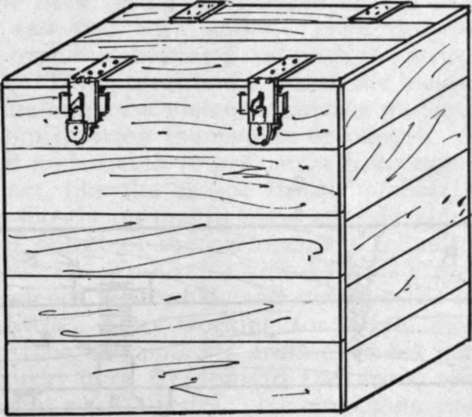How To Escape The Packing Case
Description
This section is from the book "Secrets Of The Great Mysteries", by Oudini. Also available from Amazon: Secrets Of The Great Mysteries.
How To Escape The Packing Case
Aitev the performer is in the box and the cabinet in place, he takes a small screw driver which he has concealed about him and removes the three, screws from the front cleat, Fig. 3, "C," and removes the cleat. This allows him to get at the nuts, four in each hasp, which he now removes. He can now push out the machine screws "E," which will free the locks from the front of the case. This will allow the cover to lift up and the performer can step out.
He now takes off the locks from the hasp and puts the hasps back in place, fastening them on again with the little nuts. Then the cleat "B" is fastened on again with the screws "C." The cover is now closed, and the padlocks, which have been opened with duplicate keys, sprung in place on the hasps, and the case is locked as at first, and shows no signs of having been tampered with.

Fig. 2.
Handcuffs can also be used in this act, as described elsewhere in this book.
The escape from a box which has been prepared, and has the cover nailed on, is as follows. The performer has concealed on his person a very compact jack worked by a rachet, which is made in sections so as to be carried in different parts of the clothing. When this is put together it has sufficient leverage to pry off one of the boards, through which the escape is made. This is generally a top board, because these are not matched. The jack is held against the hip or shoulder and worked first at one end of the board and then at the other, so as to pry out the nails evenly. If the boards are matched, the whole side of the box must be pried off, which will take a little longer. After escaping the nails are fitted Jack in the same holes and forced into place, using the jack also to do this. If carefully done this will not make a noticeable noise, and there will be no marks to show on the wood.

Fig. 3.
This also can be performed by using dowels, the same as described in the escape from the coffin.
Continue to:
